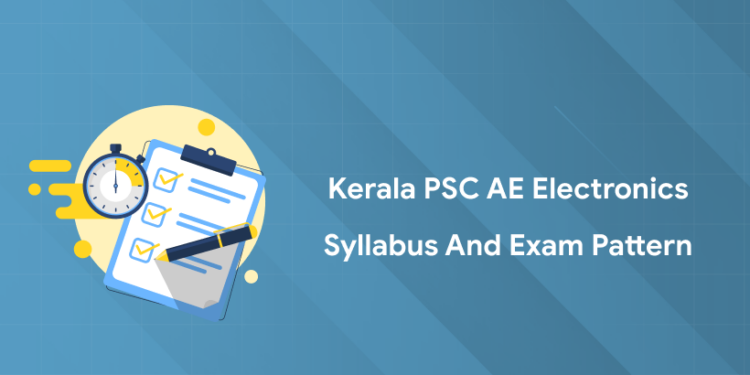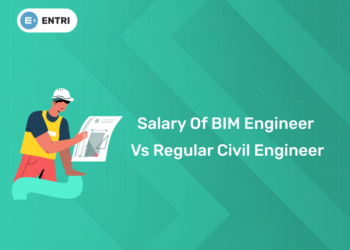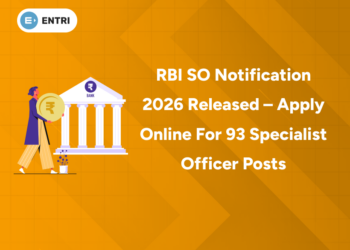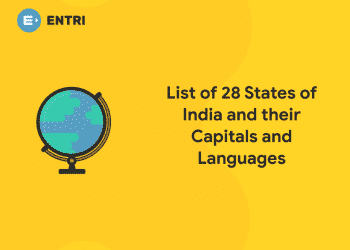Table of Contents
The Kerala PSC Engineering Assistant Electronics Syllabus 2025 is now available for candidates preparing for the exam. Applications for Public Works Department (Electronics Wing) (Category No. 578/2024) closed on January 29, 2025. The exam is scheduled to be held on 10/12/2025 (Wednesday) as a statewide test in English. The syllabus and exam pattern are attached below – download and start preparing now.
Kerala PSC Engineering Assistant Electronics Recruitment 2025 Highlights
| Particulars | Details |
| Name of recruiting organization | Kerala Public Service Commission (PSC) |
| Name of department | Public Works Department (Electronics Wing) |
| Name of post | Engineering Assistant(Electronics) / OverseerGr.1 (Electronics) |
| Category Number | 578/2024 |
| Number of vacancies | As per Notification |
| Exam Date | December 10, 2025 |
| Admit Card | November 26, 2025 |
| Medium | English |
| Mode of Exam | OMR |
| Duration | 1 Hour 30 Minitues |
| Official website | keralapsc.gov.in |
Kerala PSC Engineering Assistant Electronics Syllabus 2025 PDF
1: Between the period of 1858-1947, how many Viceroys ruled over India?
Download the Kerala PSC Engineering Assistant Electronics Syllabus 2025 PDF to get a detailed overview of the topics covered in the exam. This PDF includes the complete syllabus and exam pattern to help you prepare effectively. Click below to download.
Prepare for Kerala PSC Technical Exams with Entri
സർക്കാർ ജോലി എന്ന സ്വപ്നം ഇനി സ്വപ്നം മാത്രമല്ല! Join Kerala's Top-rated PSC Coaching Programs
Join NowKerala PSC Engineering Assistant Electronics Exam Pattern 2025
- Total Number of Questions: 100
- Marks per Question: 1 mark each
- Total Duration: 1 hour 30 minutes
- Negative Marks: 1/3
| Module | Subject | Marks |
|---|---|---|
| 1 | Electronic Devices and Circuits | 25 |
| 2 | Electronic Communication | 25 |
| 3 | Satellite Communication | 25 |
| 4 | Mobile Communication | 25 |
Kerala PSC Engineering Assistant Electronics Detailed Syllabus 2025
The Kerala PSC Engineering Assistant Electronics Syllabus 2025 outlines key topics like electrical engineering basics, machines, power systems, control systems, and power electronics. For detailed syllabus, visit the official Kerala PSC website or check below!
ELECTRONIC DEVICES AND CIRCUITS (25 Marks)
Diodes:
- Semiconductors, PN Junction Diode – Forward and Reverse Bias Characteristics
- Specifications of Diodes
- Zener Diode – Construction, Working Principle, Characteristics
- Zener Breakdown, Avalanche Breakdown
- Zener Diode as Voltage Regulator – Applications and Specifications
Rectifiers:
- Introduction and Classification of Rectifiers
- Half-Wave Rectifier, Full-Wave Rectifier, Bridge Rectifier
- Efficiency and Ripple Factor
- Applications of Rectifiers
- Filters – C, LC, and PI Filters
Transistors:
- Transistor as an Amplifier
- Transistor Biasing: Fixed Bias, Collector-Base Bias, Self Bias
- CB, CE, CC Configurations – Characteristics and Comparison (Input Impedance, Output Impedance, Current Gain, Voltage Gain)
- RC Coupled Amplifier – Load Characteristic Analysis
- Emitter Follower and Applications
- Negative Feedback in Amplifiers
- Transistor as a Switch
- Transistor Oscillators – Classifications, Condition for Oscillation (Barkhausen Criterion)
- General LC Oscillator, Hartley Oscillator, Colpitts Oscillator, RC Phase Shift Oscillator, Crystal Oscillator
Field Effect Transistor (FET):
- Construction, Working Principle, Characteristics, and Specifications
- Difference between FET and BJT
- FET Amplifier (Common Source Amplifier)
- FET as Chopper
- UJT – Construction, Equivalent Circuit, Operation, Characteristics, UJT as Relaxation Oscillator
- MOSFET – Construction, Characteristics, MOSFET as Switch
- CMOS – Basic Concept
- IGBT – Basic Principle, IGBT as Switch
Opto-Electronic Devices and Waveshaping Circuits:
- LDR, LED, 7-Segment LED, LCD, Opto Coupler, Opto Interrupter
- Infrared Transmitter and Receiver, Laser Diode, Solar Cell, Avalanche Photodiode, Phototransistor
- Diode Clippers – Types, Clamper Circuits using Diode
- Voltage Doubler
- Astable, Monostable, and Bistable Operations using Transistor
Operational Amplifier (Op-Amp):
- Ideal Op-Amp – Block Diagram and Characteristics (Minus Input Follows Plus Input, No Current through Inputs)
- Op-Amp Parameters – CMRR, Slew Rate, Virtual Ground
- Applications: Inverting Amplifier, Summing Amplifier, Non-Inverting Amplifier, Voltage Follower, Comparator, Zero Crossing Detector, Integrator, Differentiator
- Op-Amp Specifications
555 Timer IC:
- Functional Block Diagram
- Astable, Monostable, and Schmitt Trigger Operations
- Sequence Timer
IC Voltage Regulators:
-
3-Pin IC Regulators – 78xx, 79xx, LM317
D/A Converter (DAC):
- Basic Concepts – Weighted Resistor DAC, R-2R Ladder DAC
- Specifications of DAC IC
A/D Converter (ADC):
- Sampling and Quantization
- Analog to Digital Conversion Methods – Ramp Method, Successive Approximation Method, Dual Slope Method, Simultaneous Method
- Voltage to Frequency Converter, Frequency to Voltage Converter
- Specifications of ADC
ELECTRONIC COMMUNICATION (25 Marks)
Networks:
- Symmetrical and Asymmetrical Networks
- Characteristic Impedance and Propagation Constant
- Derivation of Characteristic Impedance for T and Pi Networks using Zoc and Zsc
- Image and Iterative Impedances – Derivation of Z11 and Z12 for Asymmetrical T and L Networks using Zoc and Zsc
- Iterative Impedances for Asymmetrical T Network
- Equalizers: Types, Applications, Constant Resistance Equalizer (No derivations)
- Attenuators: Types, Element Derivations for Symmetrical T and Pi Networks, Applications
- Filters: Types and Definitions, Circuit Elements, Cut-Off Frequencies of LPF and HPF Only
- Transmission Lines: Equivalent Circuit, Primary and Secondary Constants, Travelling and Standing Waves, SWR, Waveguides: Types, Advantages
Antennas & Propagation:
- Basic Antenna Principles, Directive Gain, Directivity, Radiation Pattern
- Broad-Side and End-Fire Array, Yagi Antenna, Parabolic Antenna
- Ground Wave, Space Wave, Ionospheric Propagation
Modulation:
- Electromagnetic Frequency Spectrum, Need for Modulation, Types of Modulation
- Amplitude Modulation (AM): Expression, AM Spectrum, Sidebands, Balanced Modulator, SSB Generation (Phase Shift and Filter Methods), AM VSB System, Diode Detector
- Transmitters: High-Level and Low-Level AM Transmitters, SSB Transmitter, ICW, MCW Principles
- Receivers: TRF Receiver, Superheterodyne Receiver, AGC Types, SSB Receiver
- Frequency Modulation (FM): Expression, Waveforms, Frequency Spectrum, Noise Effects, Comparison with AM, Varactor Diode Modulator
- FM Detectors: Slope Detector, Phase Discriminator, Ratio Detector (No Derivation)
- FM Transmitters: Direct and Indirect Methods, Stereophonic FM Transmitter
- FM Receivers: Block Diagram, AFC, Stereophonic FM Receiver
- Phase Modulation (PM): Principles, Phase Modulator Circuit, Comparison between FM and PM
Pulse Modulation:
-
Types, Sampling Theorem, Generation and Detection of PAM, PWM, PPM
-
PCM – Transmitter, Receiver, Quantizing Noise, Companding
Audio Devices:
- Microphones: Carbon, Condenser, Piezoelectric, Moving Coil, Velocity Ribbon – Construction and Performance
- Loudspeakers: Dynamic Cone, Horn, Electrostatic, Woofer, Midrange, Tweeter, Cross-over Networks, Surround Sound Systems
- Audio Recording and Reproduction: Magnetic Systems, Compact Disc, MP3, DVD, Stereophonic, Hi-Fi Systems, Dolby, DTS
Television:
- Monochrome TV: Scanning Principles, Aspect Ratio, Composite Video Signal, TV Transmitter, TV Receiver
- Colour TV: Principles of Colour Transmission and Reception, CCD Colour Camera, PAL Colour TV Receiver (IC Details Not Required), Digital Colour TV Receiver, LCD Display Unit, Plasma Display, Handycam Principles, LCD Projector Principles, CCTV and Cable TV
Radar Systems:
- Fundamentals, Basic Radar System, Applications, Radar Range Equation, Factors Influencing Maximum Range, Target Properties, Pulsed Systems, Display Methods – PPI Display, Automatic Target Detection
- Radio Aids to Navigation: Direction Finding, Radio Ranges, Radio Compass, Radio Telemetry, Instrument Landing System, Ground Controlled Approach
Telephone Systems:
-
Public and Private Telephone Networks, Electronic Switching System, Cordless Phone, Video Phone, ISDN – Architecture and Features
Facsimile Communication System:
-
Facsimile Sender, Cylindrical Scanning, Tape Scanning, Facsimile Receiver, Synchronization, Phasing, Index of Cooperation, Photographic and Direct Recording
Digital Communication:
- Fundamental Block Diagram, Basic Elements, Advantages, Disadvantages
- Data Transmission: Characteristics, Bandwidth Requirements, Speed, Baud Rate, Noise, Crosstalk, Distortion, Equalizers, Echo Compressors
Digital Codes:
-
Baudot, ASCII, EBCDIC, Error Detection Codes, Parity Check Codes, Redundant Codes, Constant Ratio Codes, Error Correction Codes, Retransmission, Forward Error Correction, Hamming Code
Digital Modulation Techniques:
-
ASK, FSK, PSK – Block Diagram and Operation Only
Data Sets and Interconnection:
-
Classification of Modems, Modem Interfacing, Serial Interface Standards
Optical Communication:
- Optical Communication System, Block Diagram, Need and Advantages of Optical Fibers
- Light Transmission Principles – Ray Theory
- Single Mode and Multimode Fibers, Step Index and Graded Index Fibers (Fabrication Details Not Required)
- Attenuation in Optical Fibers: Absorption, Scattering, Bending, Core and Cladding Losses
- Dispersion: Material, Waveguide, Intermodal
- Optical Sources: LED, Semiconductor LASER – Principles
- Optical Detectors: PIN and APD Diodes
- Connectors, Splices, Optical Cables, Couplers
- Optical Transmitter – Block Diagram Using Laser Feedback Control Circuit
- Optical Receiver – Block Diagram Using APD
- Applications of Optical Fibers: Civil, Industrial, Military (With Descriptive Block Diagram)
SATELLITE COMMUNICATION (25 Marks)
-
Satellite Systems:
-
Kepler’s Laws I, II, III
-
Satellite Orbits – Types: Geostationary, LEO (Low Earth Orbit), MEO (Medium Earth Orbit) – Advantages of Each
-
Apogee and Perigee
-
Active and Passive Satellites
-
Earth Eclipse of Satellite
-
Launching Orbit
-
Antennas: Parabolic Reflector, Cassegrain Antenna
-
-
Space Segment:
-
Power Supply
-
Attitude Control
-
Station Keeping
-
Transponders
-
Telemetry, Tracking, and Command (TT&C) Subsystem
-
Thermal Control
-
Antenna Subsystem
-
-
Earth Segment:
-
Receive-Only Home TV System – Block Diagram
-
Transmit-Receive Earth Station – Block Diagram
-
-
Satellite Services:
-
INTELSAT
-
GPS (Global Positioning System)
-
MSAT (Mobile Satellite Services)
-
MOBILE COMMUNICATION (25 Marks)
-
Cellular Telephone:
-
Evolution and Fundamental Concepts
-
Simplified Cellular Telephone System
-
Frequency Reuse
-
Interference: Co-Channel and Adjacent Channel Interference
-
Improving Coverage and Capacity: Cell Splitting, Sectoring
-
Roaming and Handoff
-
-
Satellite Multiple Access Techniques:
-
TDMA (Time Division Multiple Access)
-
FDMA (Frequency Division Multiple Access)
-
CDMA (Code Division Multiple Access)
-
-
Digital Cellular System:
-
GSM (Global System for Mobile Communications)
-
GSM Services
-
GSM System Architecture
-
Radio Subsystem
-
Download Kerala PSC Engineering Assistant Electronics Syllabus 2025 PDF
Follow these steps to download the official syllabus from the Kerala PSC website:
- Visit the Kerala PSC Website – Go to www.keralapsc.gov.in.
- Navigate to the Recruitment Tab – Click on the “Recruitment” section.
- Select “Post-Wise Syllabus” – Look for the syllabus section categorized by posts.
- Find AE Electronics Syllabus – Scroll down or search for ngineering Assistant (Electronics) syllabus.
- Click on the Download Button – Once located, click the “Download” button.
- Save the PDF – The syllabus file will be downloaded to your device for offline access.











